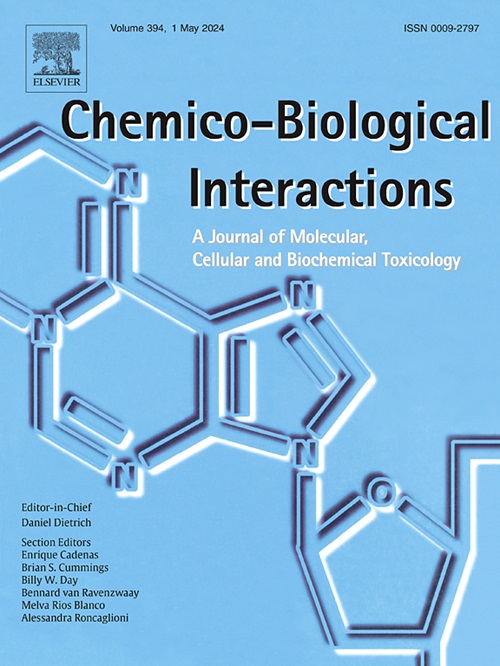Aristolochic acid I induced mitochondrial Ca2+ accumulation triggers the production of MitoROS and activates Src/FAK pathway in hepatocellular carcinoma cells
IF 4.7
2区 医学
Q1 BIOCHEMISTRY & MOLECULAR BIOLOGY
引用次数: 0
Abstract
Aristolochic acid I (AAI) is one of the nephrotoxic and carcinogenic compounds in Aristolochic acids (AAs). Recent studies have reported its promoting effect on hepatocellular carcinoma. However, the underlying mechanisms of AAI for the development of HCC is still unclear. Here, we found that AAI exposure caused alterations in mitochondrial function, which featured with increased ATP level and mitochondrial membrane potential, accumulation of mitochondrial Ca2+ and mitochondrial ROS (MitoROS) in Hepa1-6 and HepG2 cells. The restriction of mitochondrial Ca2+ uptake alleviated these effects. Our results showed that increased MitoROS was associated with AAI-induced migration and invasion in HCC cells. MitoROS/Src/FAK pathway was involved in the AAI-induced migration and invasion of HCC cells. In summary, our study showed that AAI affected mitochondrial metabolism of HCC cells by promoting the accumulation of mitochondrial Ca2+. These effects resulted in the activation of the MitoROS/SRC/FAK pathway in AAI-treated HCC cells, which in turn induced cell migration and invasion.
马兜铃酸 I 诱导的线粒体 Ca2+ 积累会触发肝癌细胞产生 MitoROS 并激活 Src/FAK 通路。
马兜铃酸 I(AAI)是马兜铃酸(AAs)中具有肾毒性和致癌性的化合物之一。最近有研究报告称,AAI 对肝细胞癌有促进作用。然而,AAI 导致 HCC 发生的潜在机制仍不清楚。在这里,我们发现暴露于 AAI 会引起线粒体功能的改变,其特征是 ATP 水平和线粒体膜电位升高、线粒体 Ca2+ 和线粒体 ROS(MitoROS)在 Hepa1-6 和 HepG2 细胞中积累。限制线粒体 Ca2+ 摄取可减轻这些影响。我们的研究结果表明,MitoROS的增加与AAI诱导的HCC细胞迁移和侵袭有关。MitoROS/Src/FAK通路参与了AAI诱导的HCC细胞迁移和侵袭。总之,我们的研究表明,AAI 通过促进线粒体 Ca2+ 的积累影响了 HCC 细胞的线粒体代谢。这些影响导致 AAI 处理的 HCC 细胞中的 MitoROS/SRC/FAK 通路被激活,进而诱导细胞迁移和侵袭。
本文章由计算机程序翻译,如有差异,请以英文原文为准。
求助全文
约1分钟内获得全文
求助全文
来源期刊
CiteScore
7.70
自引率
3.90%
发文量
410
审稿时长
36 days
期刊介绍:
Chemico-Biological Interactions publishes research reports and review articles that examine the molecular, cellular, and/or biochemical basis of toxicologically relevant outcomes. Special emphasis is placed on toxicological mechanisms associated with interactions between chemicals and biological systems. Outcomes may include all traditional endpoints caused by synthetic or naturally occurring chemicals, both in vivo and in vitro. Endpoints of interest include, but are not limited to carcinogenesis, mutagenesis, respiratory toxicology, neurotoxicology, reproductive and developmental toxicology, and immunotoxicology.

 求助内容:
求助内容: 应助结果提醒方式:
应助结果提醒方式:


